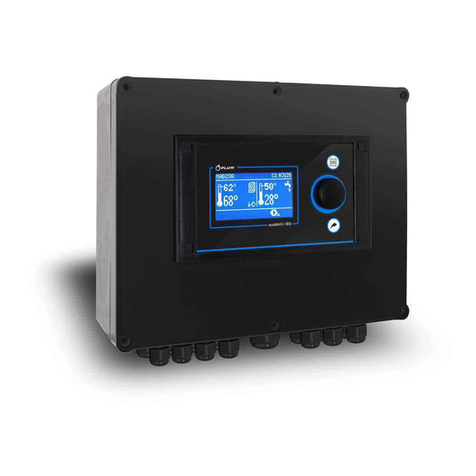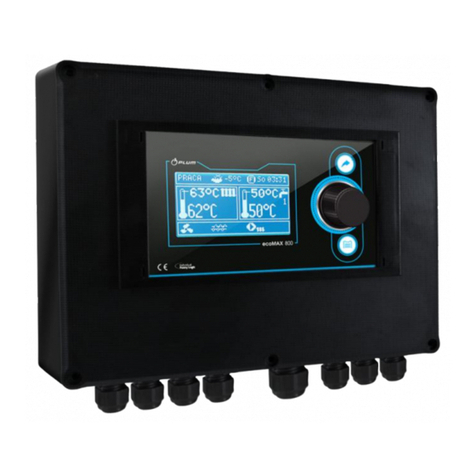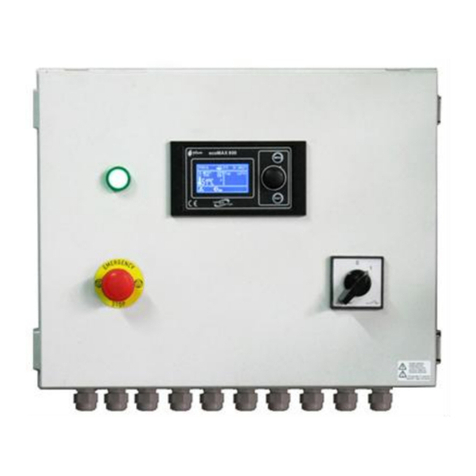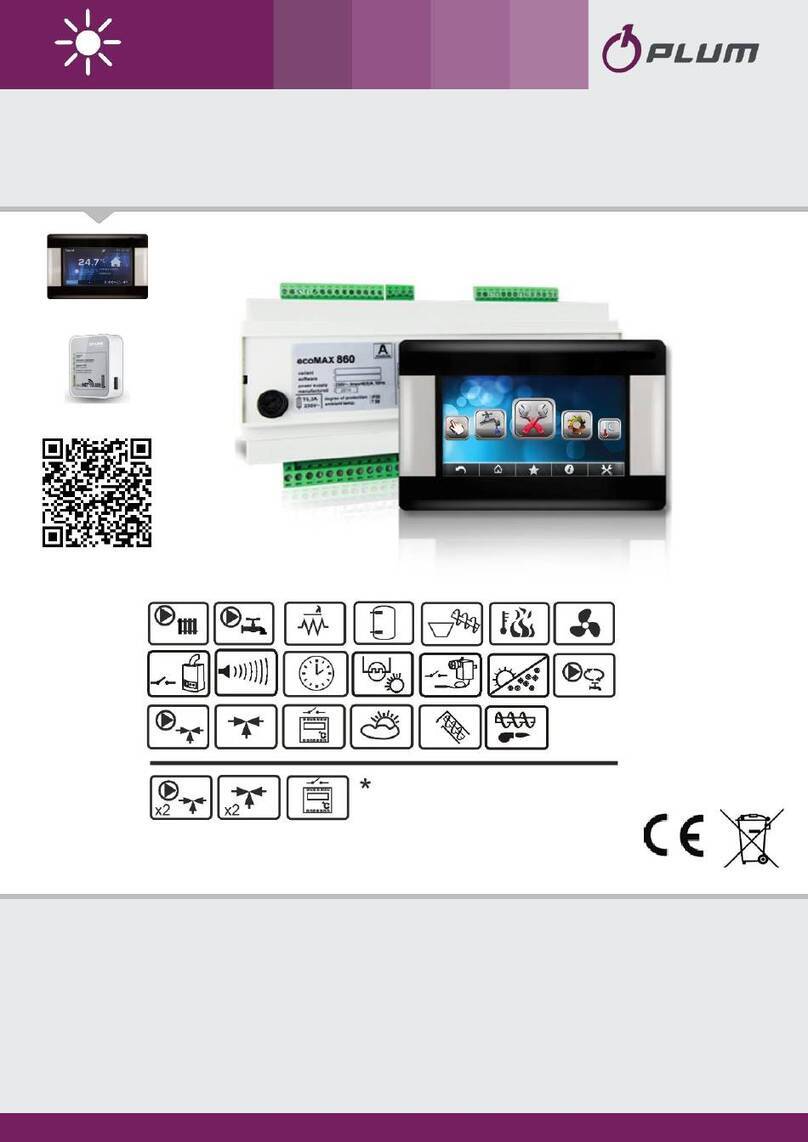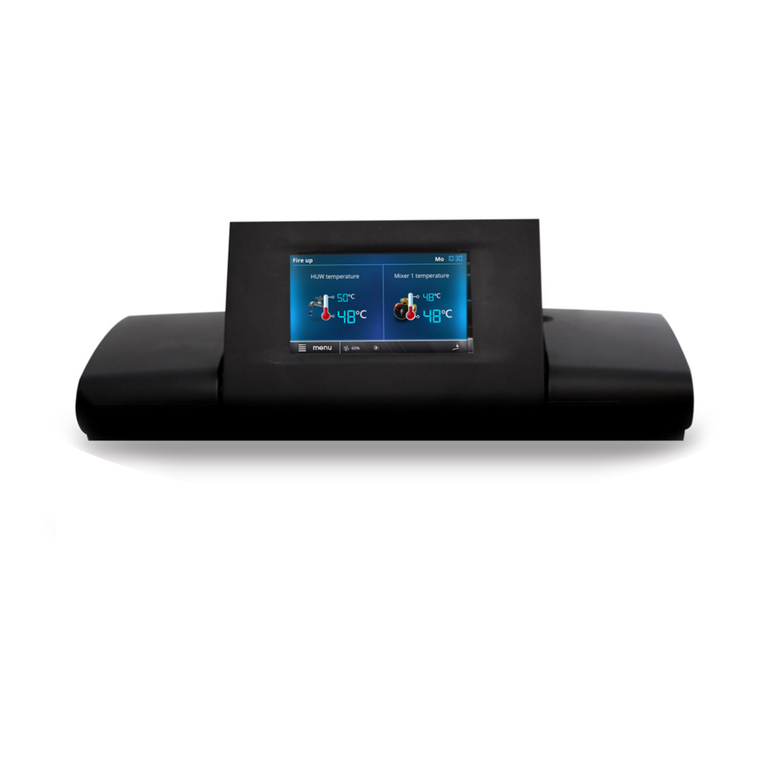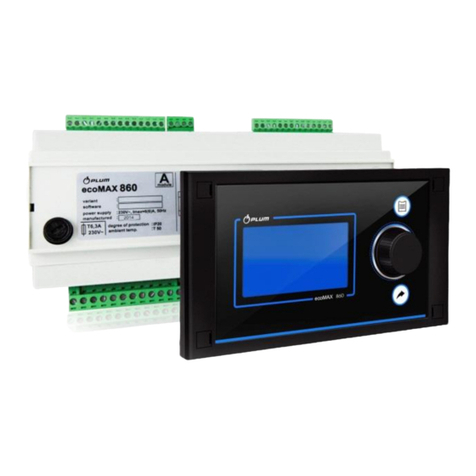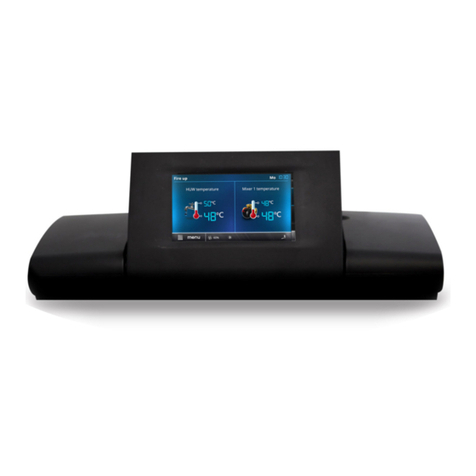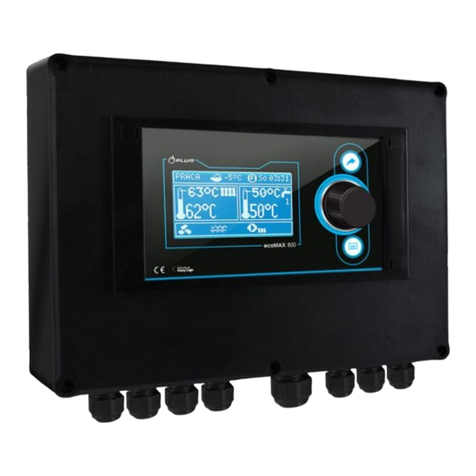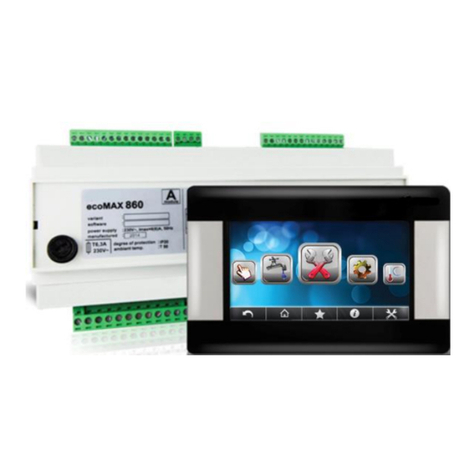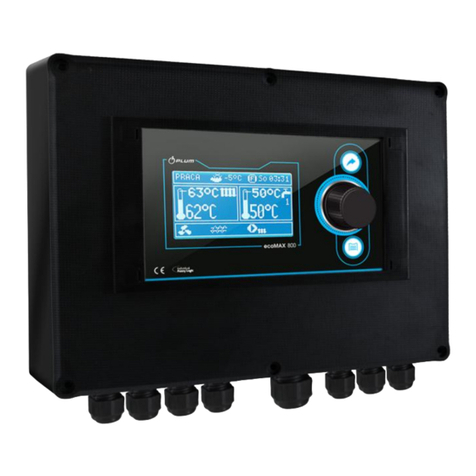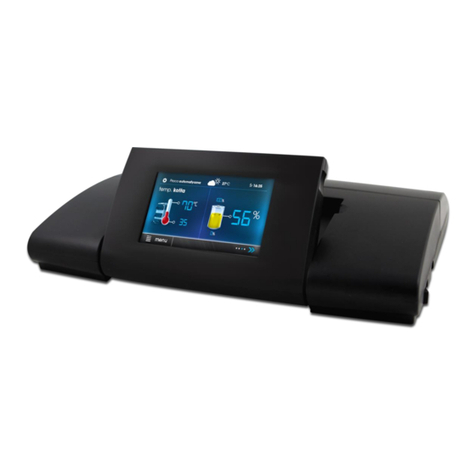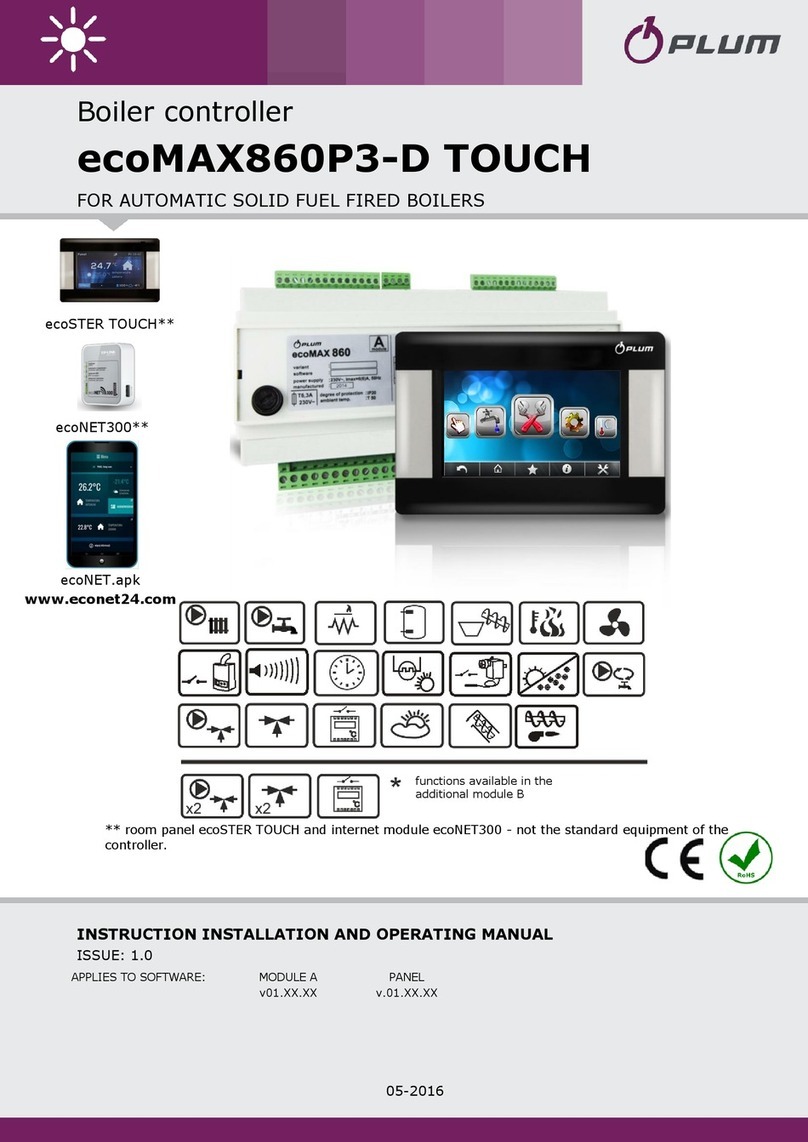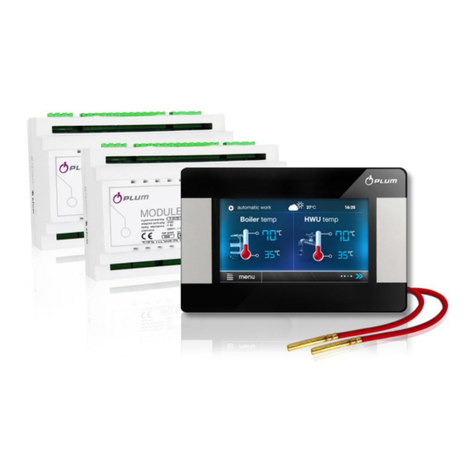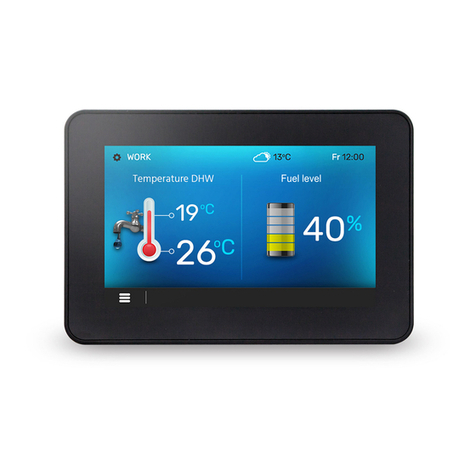TABLE OF CONTENTS
1 RECOMMENDATIONS REGARDING SAFETY....... 5
2 GENERAL INFORMATION................................... 6
3 INFORMATION ABOUT DOCUMENTATION ....... 6
4 STORAGE OF DOCUMENTATION ....................... 6
5 APPLIED SYMBOLS ............................................. 6
6 DIRECTIVE WEEE 2002/96/EG ........................... 6
REGULATOR INSTRUCTION MANUAL ..................... 7
7 STRUCTURE –MAIN MENU ............................... 8
8 OPERATING THE REGULATOR............................ 9
8.1 DESCRIPTION OF BUTTONS ..................................... 9
8.2 DESCRIPTION OF DISPLAY MAIN WINDOW ................. 9
8.3 START-UP OF THE REGULATOR ................................ 9
8.4 PRESETTING BOILER TEMPERATURE .......................... 9
8.5 STOP.............................................................. 10
8.6 FIRING UP...................................................... 10
8.7 OPERATION –MANUAL SETTINGS....................... 11
8.8 OPERATION –FUZZY LOGIC SETTINGS ................. 12
8.9 CONTROL ...................................................... 12
8.10 FUEL SELECTION................................................. 14
8.11 SETTINGS FOR DOMESTIC HOT WATER (DHW)......... 14
8.12 PRESETTING DOMESTIC HOT WATER TEMPERATURE... 14
8.13 ENABLING THE SUMMER FUNCTION .................... 14
8.14 DHW TANK DISINFECTION ................................... 14
8.15 MIXER SETTINGS ................................................ 15
8.16 WEATHER CONTROL ........................................... 15
8.17 DESCRIPTION OF SETTING NIGHT-TIME DECREASES .... 15
8.18 INFORMATION................................................... 16
8.19 DISABLING FEEDER ............................................. 16
8.20 MANUAL CONTROL ............................................ 17
8.21 RESTORING USER SETTINGS .................................. 17
REGULATOR INSTALLATION AND SERVICE SETTINGS
MANUAL ............................................................... 19
9 STRUCTURE - SERVICE MENU.......................... 20
10 HYDRAULIC DIAGRAMS ................................... 22
11 TECHNICAL DATA............................................. 25
12 CONDITIONS OF STORAGE AND TRANSPORT.. 25
13 REGULATOR INSTALLATION............................. 25
13.1 ENVIRONMENTAL CONDITIONS ..............................25
13.2 INSTALLATION REQUIREMENTS ..............................25
13.3 INSTALLATION OF CONTROL PANEL .........................25
13.4 EXECUTIVE MODULE INSTALLATION ........................26
13.5 IP PROTECTION RATE...........................................27
13.6 CONNECTING ELECTRICAL SYSTEM ..........................27
13.7 PROTECTIVE CONNECTIONS...................................28
13.8 CONNECTING TEMPERATURE SENSORS ....................29
13.9 CONNECTING WEATHER SENSOR ............................29
13.10 CHECKING TEMPERATURE SENSORS ....................29
13.11 CONNECTING ROOM THERMOSTAT.....................30
13.12 CONNECTING RESERVE BOILER...........................30
13.13 CONNECTION OF ALARM SIGNALLING ..................32
13.14 CONNECTING MIXER........................................33
13.15 CONNECTING TEMPERATURE LIMITER .................34
13.16 CONNECTING ADDITIONAL PANEL.......................34
14 BOILER SERVICE SETTINGS ...............................35
14.1 INSTALLATION TYPE.............................................35
14.2 ROOM THERMOSTAT OF THE BOILER .......................35
14.3 BOILER WEATHER CONTROL ..................................35
14.4 HEATING CURVE .................................................35
14.5 BOILER HYSTERESIS .............................................35
14.6 MINIMUM PRESET BOILER TEMPERATURE ................35
14.7 MAXIMUM PRESET BOILER TEMPERATURE ...............35
14.8 MINIMUM FAN POWER........................................36
14.9 FUEL SHORTAGE DETECTION TIME ..........................36
14.10 FEED TIME CONTROL ....................................36
14.11 EXTENDING AIRFLOW OPERATION ......................36
14.12 MAXIMUM FEEDER TEMPERATURE .....................36
14.13 MIN.RETURN TEMPERATURE ............................36
14.14 RETURN TEMPERATURE HYSTERESIS....................36
14.15 RETURN PROTECTION ......................................36
14.16 RESERVE BOILER .............................................36
14.17 ALARMS –SIGNALLING SETUP ...........................37
14.18 BOILER COOLING TEMPERATURE ........................37
15 CH AND DHW SERVICE SETTINGS.....................37
15.1 CH START TEMPERATURE .....................................37
15.2 CH PUMP STANDSTILL TIME ..................................37
15.3 CH PUMP STANDSTILL WITH DHW PRIORITY............37
15.4 MAXIMUM DHW TEMPERATURE ..........................37
15.5 DHW TANK HYSTERESIS.......................................37
15.6 INCREASE IN BOILER TEMPERATURE AN ACCOUNT OF
DHW AND MIXER..........................................................38
15.7 EXTENDING DHW PUMP .....................................38
16 MIXER SERVICE SETTINGS ................................38
16.1 MIXER OPERATION ........................................38
16.2 MAX.PRESET MIXER TEMPERATURE .......................38
16.3 MIN. PRESET MIXER TEMPERATURE .......................38
16.4 RANGE OF PROPORTIONALITY................................38
